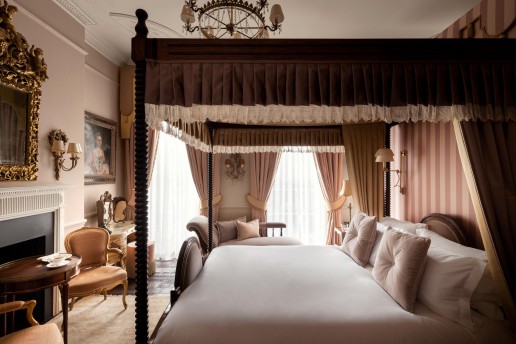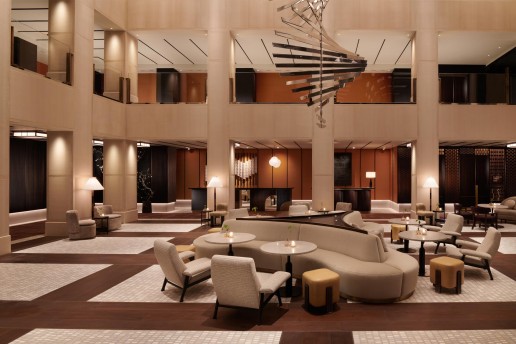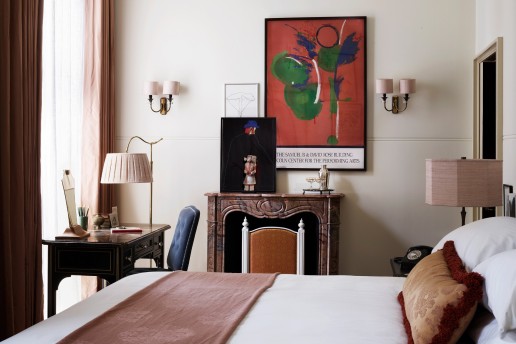Rafael de la-Hoz and Gilles & Boissier team up to restore César Ritz’s Belle Époque masterpiece to its former glory, whilst adding a contemporary twist, writes Agnish Ray.
The legend goes that King Alfonso XIII of Spain had Madrid’s Ritz hotel built because he needed somewhere to host guests travelling for his wedding to Victoria Eugenia of Battenberg. The illustrious location – right by cultural treasures like the Prado Museum, the commercial hub of Gran Via and leisure areas like El Retiro Park – would make it a fitting home for the great and good on their visit to the Spanish capital.
A nice story, but a far-fetched one according to Spanish architect Rafael de la-Hoz, whose studio has handled a three-year transformation of this historic building. Instead, he says it is more likely that the hotel was part of the monarch’s wider ambition to put Madrid on the global stage, in particular by holding a World’s Fair in the city.
Although this dream was never actually fulfilled, de la-Hoz argues that Alfonso’s ambition moved him to create a hotel that put the city on a par with its leading global counterparts – not just for tourism, but for national excellence in heritage and innovation. The regal commission was appointed to Swiss hotelier César Ritz, acclaimed for his properties in London and Paris. Madrid became his third, where he created an establishment whose aesthetics reflected the decorative styles of the Belle Époque that was sweeping across Europe at the time.
Today, the Ritz brand speaks for itself. Synonymous the world-over with classic grandeur, it acts as a benchmark of prestige for establishments far and wide. Now, over a century after its creation, this bastion of world-class hospitality in Madrid has had a €100 million revamp, reopening under the management of Mandarin Oriental Hotel Group.
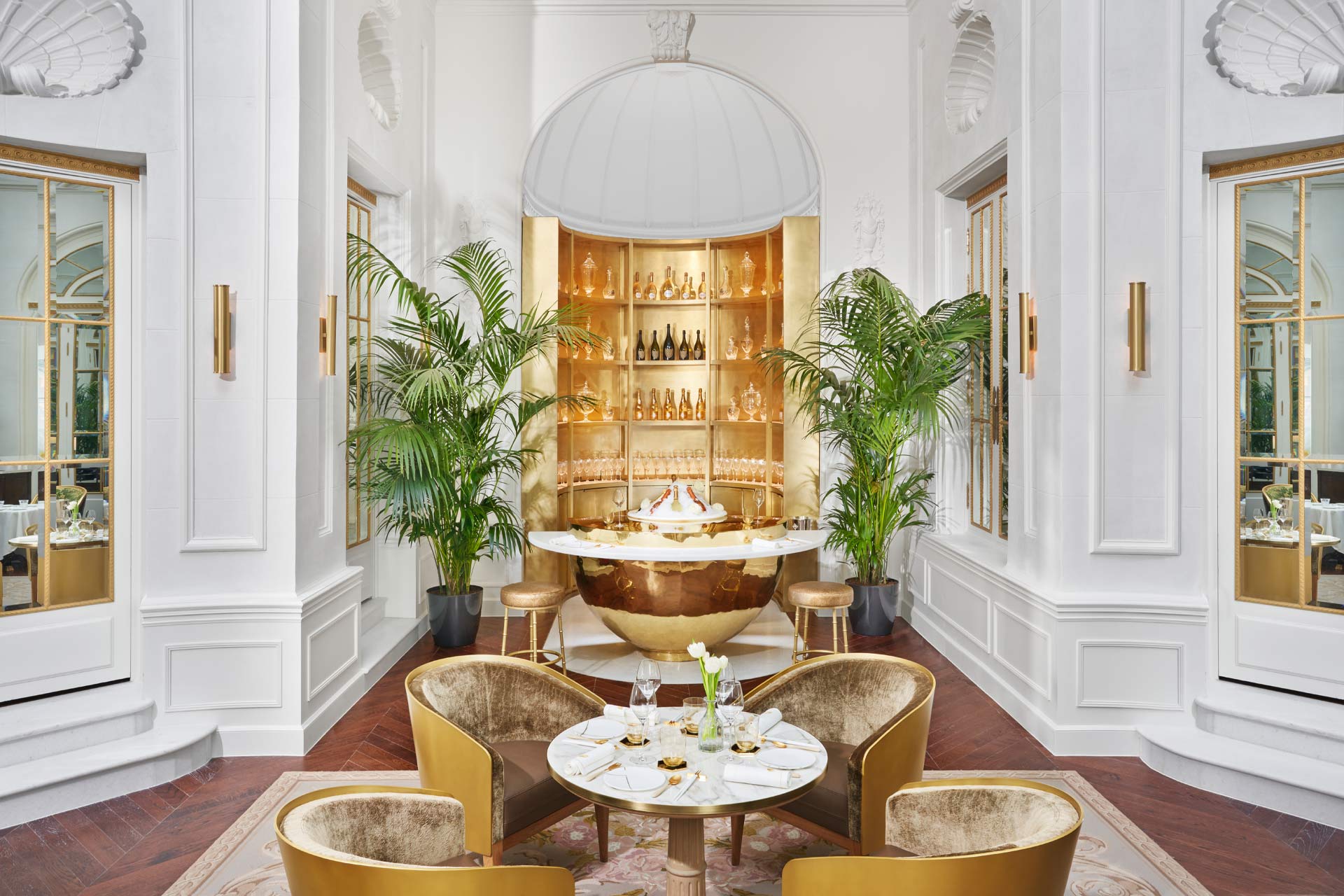
Decorating the new 153-key hotel, interior design studio Gilles & Boissier wanted to let the old and new voices speak in harmony. “In the end, this had to remain a palace,” says Dorothée Boissier, co-founder of the Parisian practice. “But it’s good when you don’t know what is new and what isn’t.”
The designers maintained a sense of history with nods to traditional Spanish craft techniques such as leatherwork, embroidery and carved wood. In the guestrooms for example, the pattern embossed into the Cordoba leather of the headboards and embroidered thickly into the upholstered footboards is inspired by Spanish bullfighter costumes.
Downstairs in the Palm Court – the hotel’s principal lounge area – interiors are floral and fertile, with lush tapestry-style fabrics embroidered in botanical patterns. Four original sofas from the old hotel sit at the centre, while Gilles & Boissier’s own new, bespoke items populate the rest of the space. The most striking architectural change is the installment of the glass ceiling overhead. The original 1910 hotel also had a glass roof here, reflecting a popular Belle Époque fashion, but it was built over around the mid-century. The architects have therefore revived the splendour of César Ritz’s vision by once again flooding the space with daylight. The result is resplendent, allowing Palm Court’s plants and trees to flourish, and breathing further life into the already rich interior design. “When you have such natural light, the decoration becomes more powerful,” explains Boissier. “The volumes are more interesting, the bright colours can receive the shadow and the light – it gives a completely different look to the space.”
De la-Hoz adds: “The original roof must have functioned very poorly in terms of acoustics, humidity and temperature.” Today, in contrast with the simpler technology available back then, the new, highly-resistant glass-and-steel structure allows Madrid’s bright sunshine to pour down yet protects from its searing heat. Beneath, guests enjoy afternoon tea while a pianist provides musical ambience. A fragmented mirror sculptured by contemporary artist Juan Carlos García Pérez hangs on the walls, its geometric shapes in contrast with the softness of the linen and velvet furnishings. This is one of several newly commissioned artworks found in the hotel. By the piano, a vibrant, modern tapestry by textile artist Clara Sulla has replaced the 17th century pieces that hung here previously, and the cocktail bar, Pictura, is adorned with a series of portraits by photographer Paula Anta of eminent Spanish cultural figures, composed to imitate Spanish Golden Age paintings.
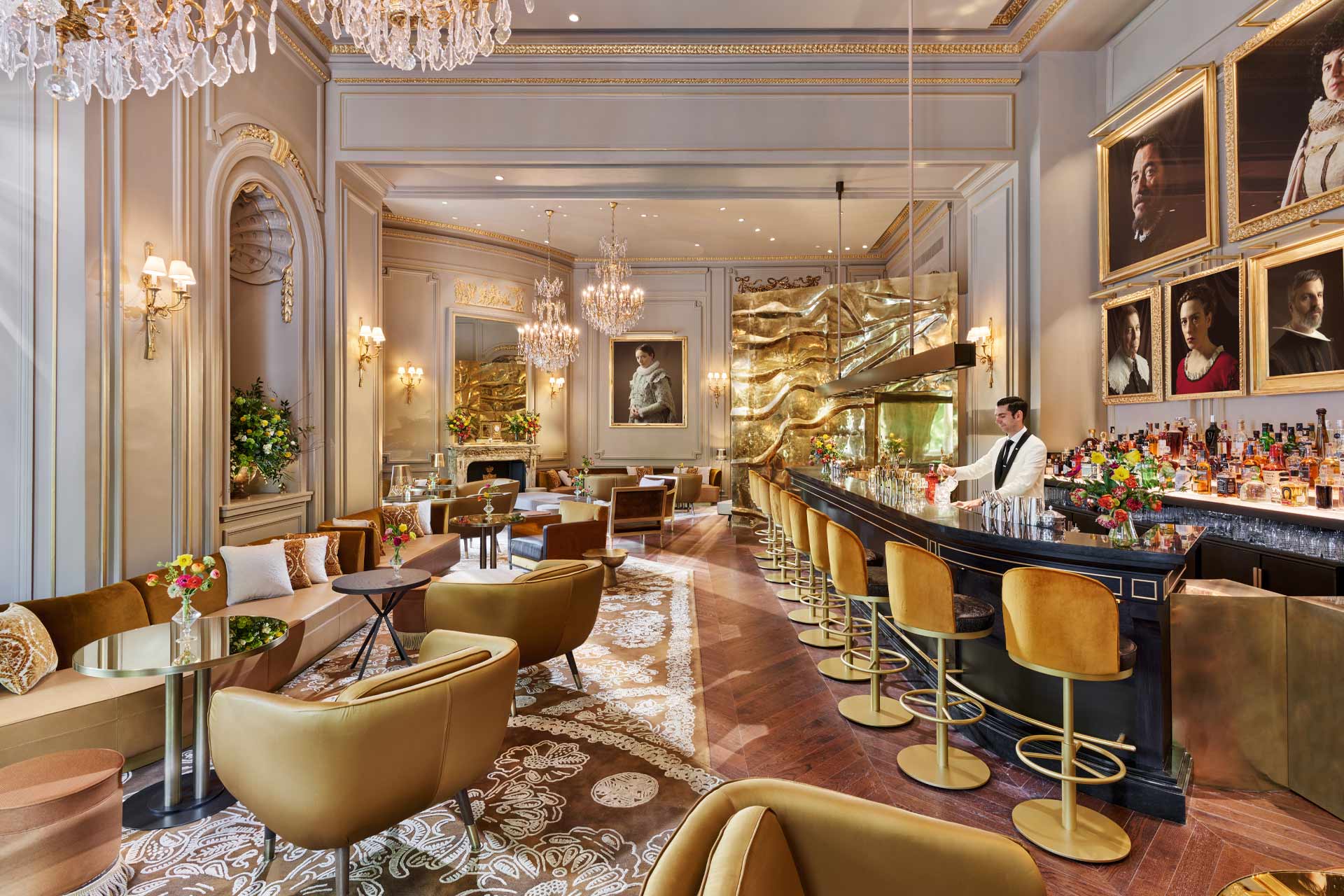
This bar area exudes the hue of a warm sunset; rusty shades of orange and brown blend with glistening gold and brass, as if bathing the space in whiskey and cognac. The original Ritz Madrid crest is engraved into the fireplace – the crown floating above the shield serves as a reminder that this has been royal property from the outset; the new hotel still seeks to treat its guests like kings and queens with crowns embroidered into the doormats of each guestroom.
Another symbol in the emblem is Madrid’s native madroño strawberry tree. Overhead in the hotel’s lobby is a new lighting installation by London-based design studio Haberdashery, whose botanical shapes are inspired by this, and other local plant species.
Come mealtime, dining experiences by Michelin-starred chef Quique Dacosta await. The main restaurant, Deessa, offers a tasting menu of iconic dishes that Dacosta has served over the years in his signature restaurant in Denia, a coastal city in the Valencia region. These include stingray in black butter sauce, a smoked eel rice dish served with cherries, Denia prawn poached in sea water and a spectacular spread of caviar and fish roe.
There’s also an intimate eight-seat champagne lounge with a towering display cabinet, an enchanting garden terrace open through the summer months, and, for the first time in its 110-year history, the hotel has introduced a spa, where soothing white marble and gold-tiled experience showers pair with palatial chandeliers designed by Preciosa and specially adapted to suit the humid environment.
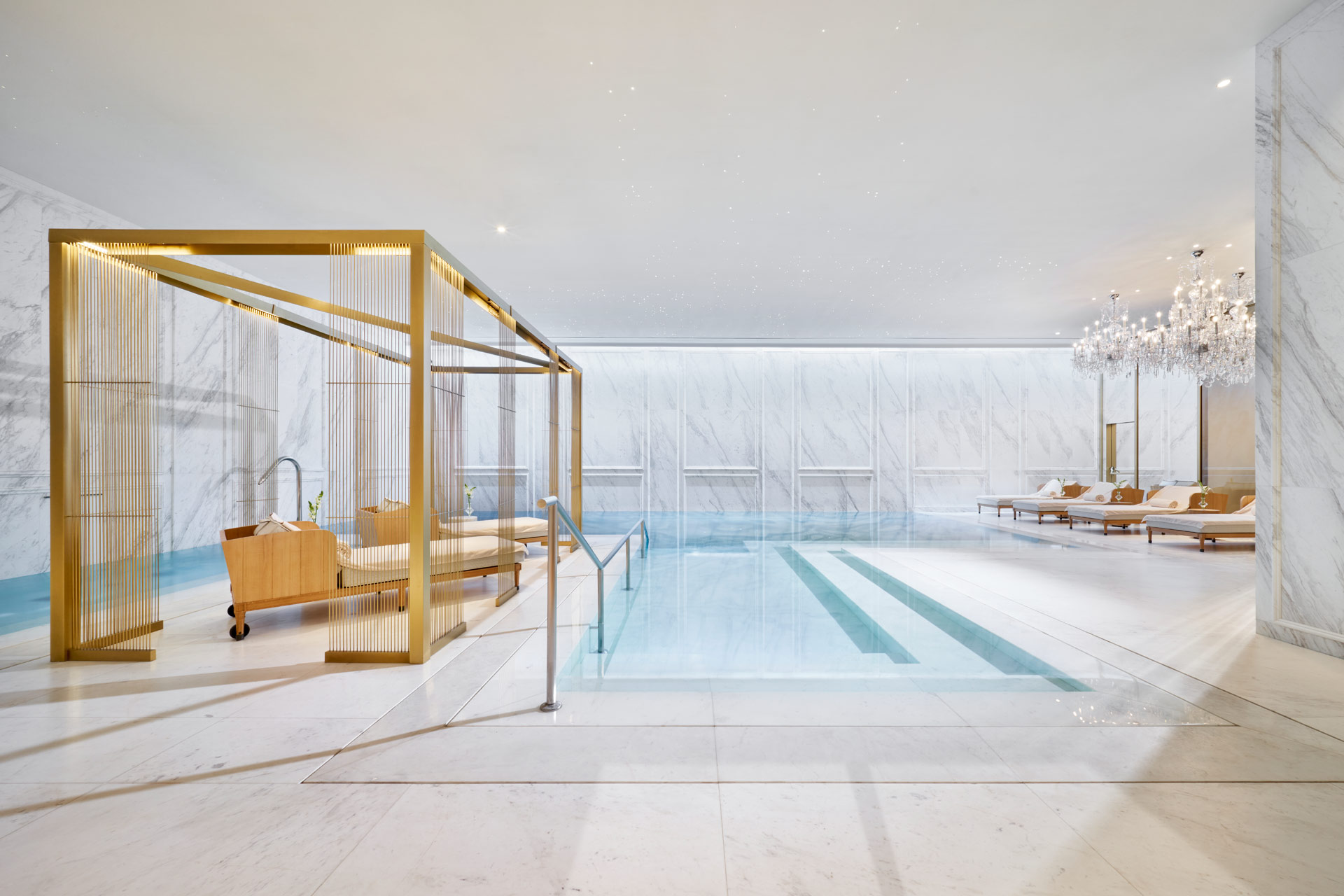
Another major change is the size of the workforce, which has more than doubled with Mandarin Oriental’s takeover. Though there’s plenty of new talent, management were conscious to retain staff from the old days, who have witnessed quite the transformation – the longest standing among them is Luciano López, a doorman who has worked here for 48 years.
Although some purists were suspicious of this much-talked-about makeover, López says sceptics have eaten their words at the unveiling of the finished product. There were concerns about what an international brand like Mandarin Oriental might do to an institution so steeped in Madrid’s history, but the result proves that this is not so strange a marriage of cultures. The clue is found in the reception area, where a glass frame displays an antique 17th-century embroidered fan made from lace and mother of pearl. Fans hold strong significance in both Spanish and Oriental cultures – the fan is also the principal symbol of the Mandarin Oriental logo. The artefact’s origins – whether European or Asian – remain uncertain. Complementing it, a dynamic sculpture representing the movement of a flamenco dancer’s fan sweeps across the wall behind the desk. Together, the two pieces act as a tribute to the power of this timeless accessory to unite two worlds.
EXPRESS CHECK-OUT
Owner: Mandarin Oriental Hotel Group, Olayan Group
Operator: Mandarin Oriental
Architecture: Rafael de La-Hoz
Interior Design: Gilles & Boissier
www.mandarinoriental.com
CREDITS
Words: Agnish Ray
Photography: © Manolo Yllera
Related Posts
3 August 2021
Feature: Henry’s Townhouse, London
2 August 2021
Feature: Nobu London Portman Square
30 July 2021
